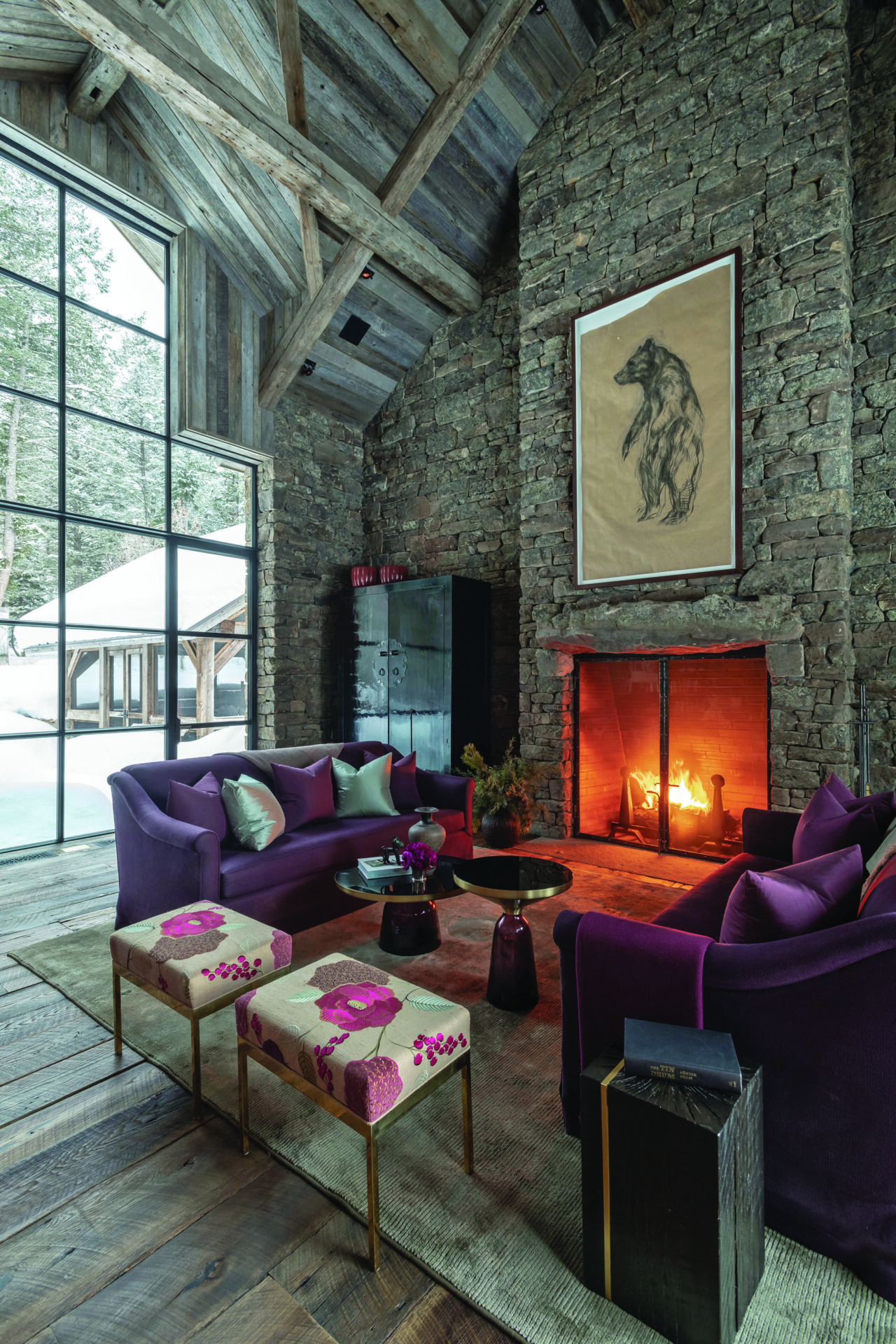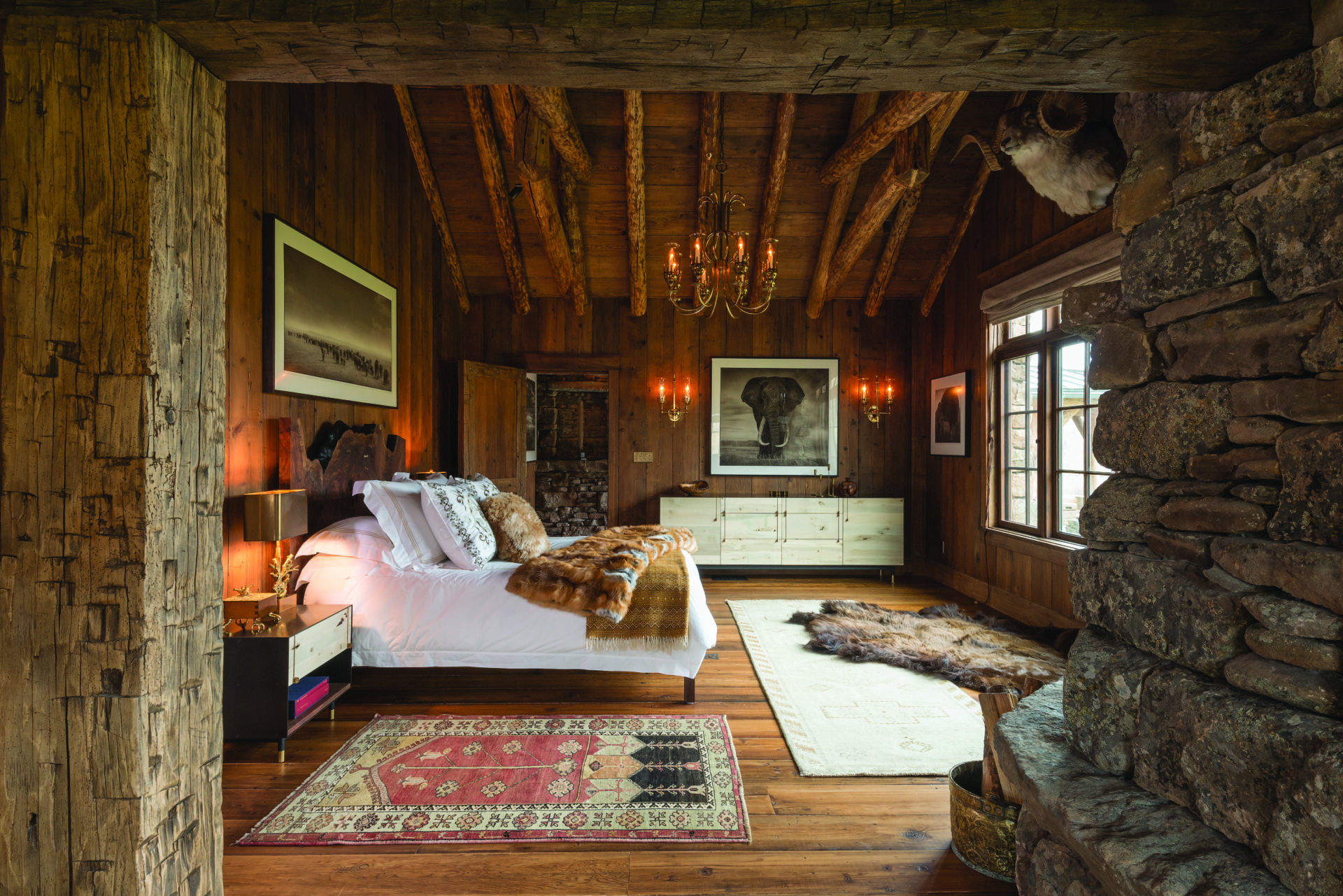Read The
Current Issue
Old & New
Mixing traditional Western and wildlife art with modern pieces can create a more interesting collection and interiors.
// By Maggie Theodora

“I see a movement away from art that’s expected in a home, either in tone or style,” says Chad Repinski, director of Jackson’s Diehl Gallery. “Collectors are shunning the idea of ‘matchy-matchy,’ which can free them to install art that stands on its own.” In Jackson Hole, this movement away from the expected and matchy-matchy means collectors and homes that increasingly blend traditional wildlife and Western art with contemporary/modern art and aesthetics.
Twenty years ago, traditional Western and wildlife art dominated Jackson Hole, at both galleries and our National Museum of Wildlife Art, which has a permanent collection of more than 4,000 works. There were a handful of galleries that represented artists who did non-representational work, but the largest galleries focused on photo-realistic artworks featuring wildlife, Native Americans, and Western landscapes and life as their subjects. Two of these galleries, including Trailside Galleries, which had been a leader in the valley’s art scene since it opened on the Town Square in 1963, recently closed. Meanwhile, galleries representing artists whose work is nonrepresentational are growing in number.
It isn’t only galleries that are expanding the styles of art they exhibit. The NMWA’s collection has been growing to include more abstract, modern works. Currently, after exploring galleries that feature traditional works by artists including Carl Rungius, Albert Bierstadt, and Wilhelm Kuhnert, museum visitors emerge to Ai Weiwei’s Zodiac (Tiger), which is made from thousands of plastic Lego bricks. Not currently on exhibit, but part of the museum’s permanent collection is Andy Warhol’s 10-piece Endangered Species portfolio. “Growing up in Jackson, I adored the original approach of the [NMWA],” says Kathryn Mapes Turner, a painter and gallery owner for 19 years. “Founder Bill Kerr had an incredible eye and found very timeless works of art. And I feel like the collection has grown up alongside Jackson’s appreciation for more diverse art. It’s been really fun and refreshing to see an insurgence of more contemporary styles come to different galleries and the museum.”
I think there is a slow shift away from traditional Western art in Jackson Hole; that used to be the king here.”
—Madison Webb Stanko, the former director of the Jackson Hole Art Auction and now the director of marketing at the National Museum of Wildlife Art

Interior designer Shannon White Burns says the willingness to mix traditional and modern works and aesthetics makes for more layered and interesting interiors. “If I were staging a home to photograph, I might make sure everything matches and is the same style. There is a logic and calmness to this that may appeal to most people,” she says. “But I’d never do that in a home clients will be living in. My goal isn’t to create an interior that feels like a museum, but an interior that tells the stories of where it is and the people who live in it.” Diehl Gallery’s Repinski says, “When I see a home that has been rigorous in its adherence to overall design, it feels cold and overly intentional. Even in places as iconic as the West, we want to bridge and juxtapose old with new.”
The artists at Turner’s Gallery, Turner Fine Art, create in a variety of styles. When this story was being written, hanging in the gallery was a hyperrealistic 47-x-47-inch oil painting of a hummingbird’s head (by painter Tony Pridham), oil paintings by Bethanne Cople that Turner describes as “poetic,” and Turner’s own paintings, which she says, “transcend boxes like ‘traditional’ or ‘contemporary.’”
Such a diversity of styles could be confusing and disjointed, but there is a thread that ties them together. “When I look at and create art, my question isn’t if it’s traditional or contemporary, but rather, ‘Is it true?’” says Turner. “I think that when artists paint and create from an authentic place, we have more of a chance of being timeless with our work. That is what I look for in my own work and in the work of artists in the gallery.” The artists in Turner Fine Art create in different styles, but the works are connected by a sense of timelessness.
When I see a home that has been rigorous in its adherence to overall design, it feels cold and overly intentional. Even in places as iconic as the West, we want to bridge and juxtapose old with new.”
— Chad Repinski, director of Jackson’s Diehl Gallery

“It doesn’t have to be something as obvious as style, palette, or subject matter that holds a collection or interior together,” says Burns, who has been doing interiors in Jackson since 2001. Madison Webb Stanko, the former director of the Jackson Hole Art Auction and now the director of marketing at the National Museum of Wildlife Art, says that something as simple as collectors liking all of the pieces can be enough to give a collection continuity. Carrie Wild, a painter and the co-owner of Gallery Wild and Altamira says, “When buying art for your home, you should buy art that you like. If you’re putting contemporary work in a traditional home or vice versa, or putting contemporary and traditional pieces near each other—if you like the art, it just finds a way to work.”
The week before Repinski was interviewed for this story, he was in a “beautiful ‘modern West’ home” that displayed traditional Western tapestries, abstract photography, and a work by Diehl Gallery artist Juan Carlos Collada, whose pieces are made up of butterflies created with painted features. “Underlying themes of color, style, or artist become less important than reflecting the character and experiences of the collector,” says Repinski. “Good art will always stand on its own and improve any room. If there’s meaning, it belongs.” JH





